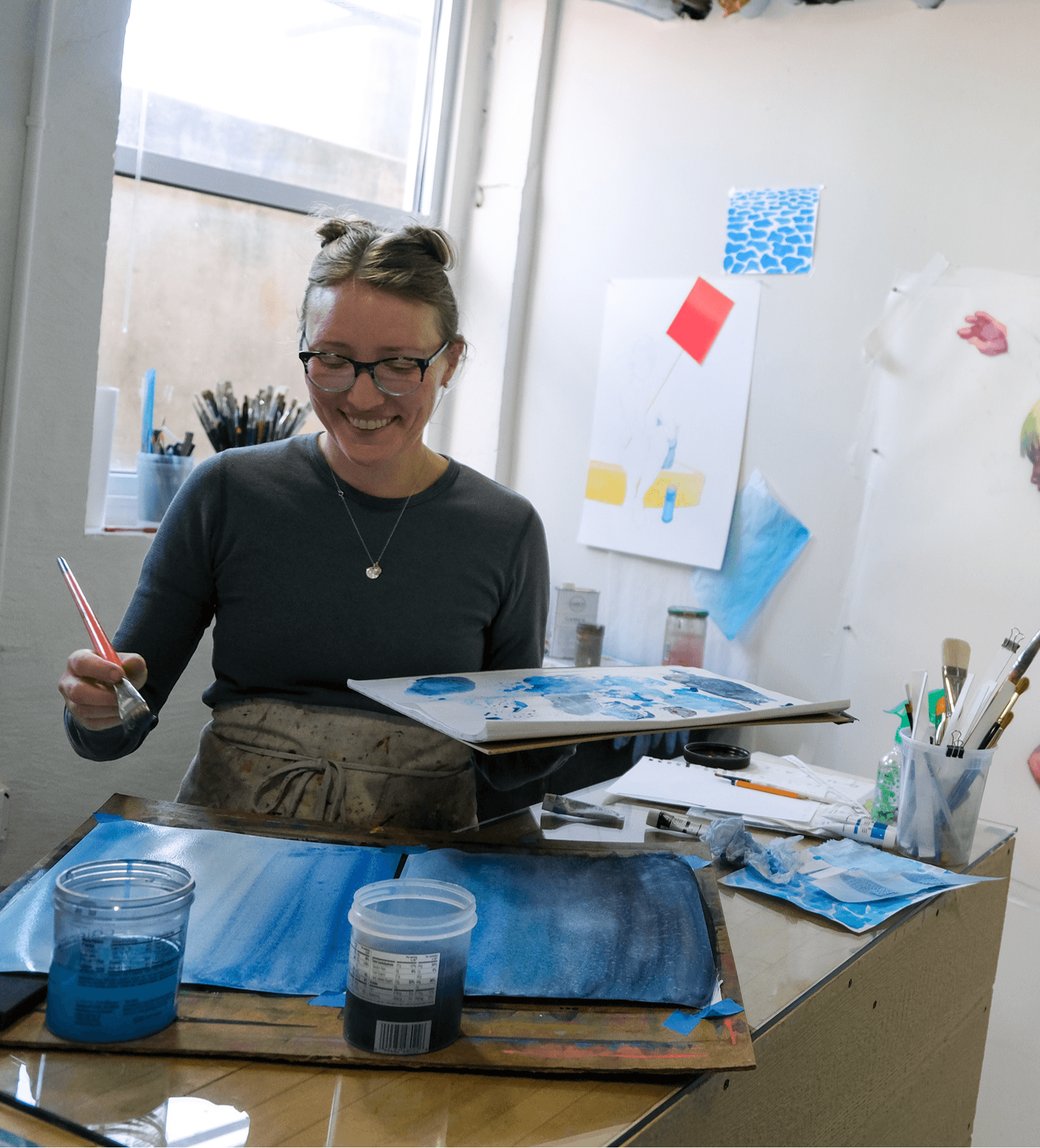Alright – so today we’ve got the honor of introducing you to Katherine Knight. We think you’ll enjoy our conversation, we’ve shared it below.
Katherine, looking forward to hearing all of your stories today. We’d love to hear about a project that you’ve worked on that’s meant a lot to you.
This past fall, I completed my first ever site- specific installation: ‘Pool’, at VisArts in Rockville, MD. I
transformed the entire gallery into a summer afternoon spent poolside, including multiple life-sized painted figures swimming, jumping, and floating in the ‘water’, which was created with billowing hand dyed silk fabric and fans. This installation was meaningful to me for several reasons. First, because nearly all the figures were based on friends and family who agreed to participate in the project (only the lifeguard was invented), and secondly because it drew upon most of my creative skills: set design and scenic painting, puppet building and manipulation, figure painting and drawing, sewing and embroidery. I even had to learn how to dye fabric.
This melding of techniques was fun and healing – I have always been interested in working with my hands, and have amassed a wide variety of skills. Throughout my education, I was often scolded for flitting from one media to the next, or pressured to chose one over the others. I don’t fault my instructors: I know that they were just trying to help me graduate on time, or build a cohesive portfolio for future use. But all the same, I began to identify only certain skills as ‘fine art’ skills appropriate for my studio, and others as ‘craft’ or ‘hobbies’, to be practiced (often guiltily) at home.
Completing Julia Cameron’s seminal ‘The Artist’s Way’ several years ago helped me wrestle with my complex feelings of guilt and attraction to multiple media. I am meticulous and highly skilled across all my media, and eventually I began to see this as a superpower, and not a hinderance. ‘Pool’ was the first project where I actively set out to break down the silos, and include as many of my skills as possible. I felt tremendous energy working on this project, because I finally felt like I was showing up as my full self in my studio. It has sparked renewed energy, and a new commitment to making work in this vein.
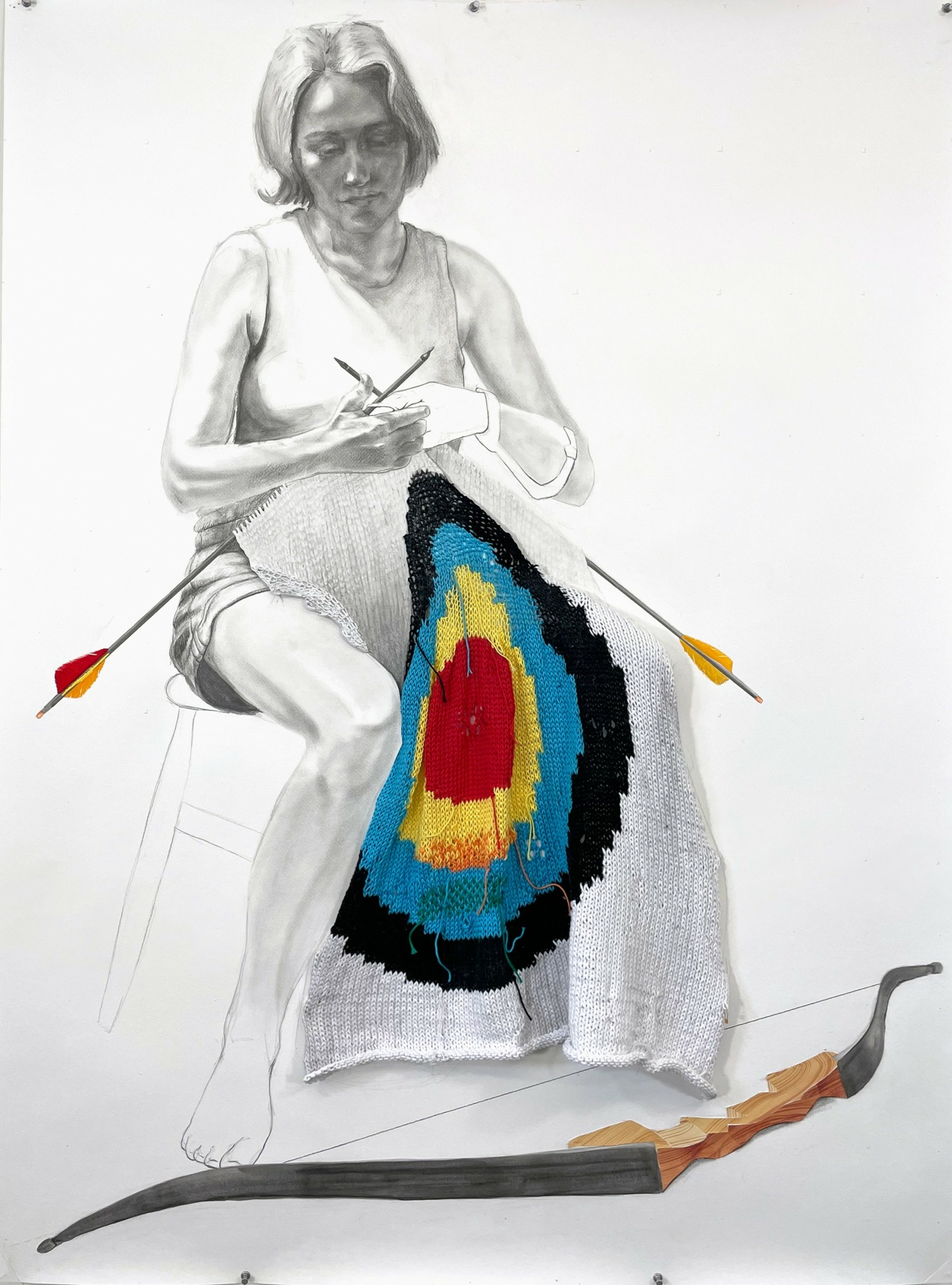
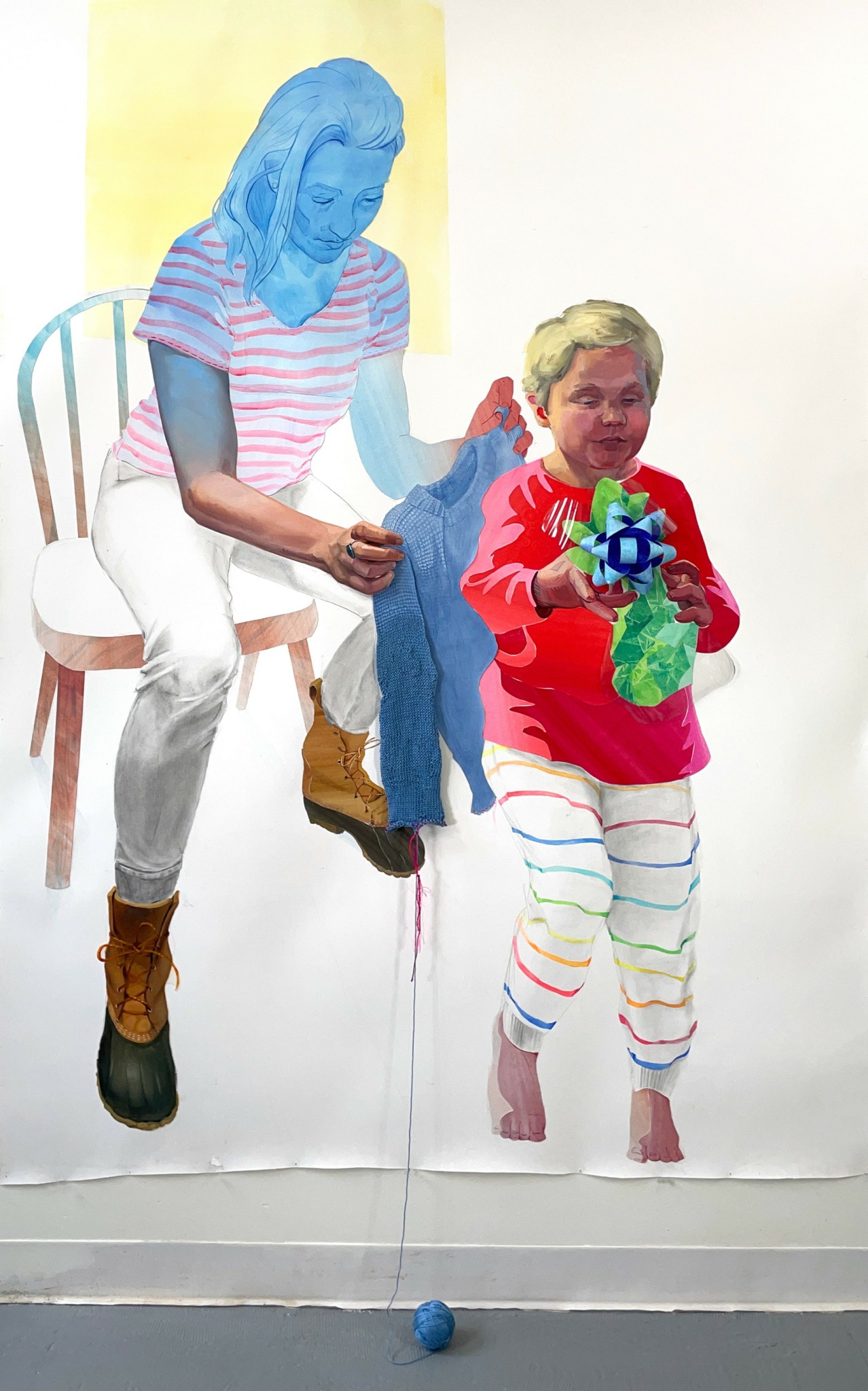
Awesome – so before we get into the rest of our questions, can you briefly introduce yourself to our readers.
My name is Katherine Knight, and I’m a visual artist, mom, and full-time Associate Professor of Visual Art. I live in Washington, DC, but also spend a great deal of time in rural Appalachia. I make autobiographical mixed media collages that range from intimately scaled sketchbooks to immersive 3D installations, and wall sized pieces with figures up to one third larger than life. I gravitate towards narratives that combine the fleeting and bittersweet beauty of daily life with the anxiety and (sometimes) anger I feel as a 21st century human and parent.
I combine the fine art painting and figurative techniques I learned in my formal arts education with skills I picked up working in theater, and also those I learned at home from the many crafters, stitchers, and knitters who have mentored me since I was a child. I try to disguise the transitions between my ‘high art’ and ‘craft’ techniques, a sleight of hand that results in a visual puzzle for viewers to solve. Knitted textiles morph seamlessly into trompe l’oeil paper and paint. A soupy wash of color turns out to be hand embroidered lace. A seemingly photographic element is alive with color and brushwork upon closer inspection. I delight in methods that are unapologetically hand-made, while maintaining links to historical conventions of figurative painting and pictorial space. This practice is also an attempt to place all of the techniques I deploy on equal footing; a small but satisfying act of rebellion against those voices in my past that implied a hierarchy, and considered my interest in domestic arts a problematic distraction from my pursuit of serious painting. I am actively working to break down some of the unnecessary barriers I’ve built between these practices, and celebrate all of my creative interests and abilities.
I knew at a very early age that I wanted to be an artist and a teacher, which are connected by my love of creative problem solving. I love challenging my own assumptions in my studio. I find I can lose motivation if I feel like I know what I’m doing, so to keep myself engaged I’m always asking ‘how else could I make this mark or fill this space? What if I used this familiar material differently?’ I need to always have something I’m trying to figure out – a learner’s mindset – which makes it very easy to relate to my students. In my classes, I get to help them solve their creative problems in ways that feel manageable and authentic to them. It’s so rewarding to help students develop skills and stretch their creative wings, and ultimately find their voice. It also means that I’m constantly exposed to new perspectives, ideas, and problems, which inspire new questions for me to ask myself in my work.
Teaching is foundational to almost every part of my life. I love the routine – the long breaks and the fact that I share a schedule with my school aged son. It’s also good that my livelihood isn’t dependent on my artistic output. Given the experimental nature of my practice, progress is often very slow. A steady paycheck gives me the freedom and flexibility to pursue my work without compromise.
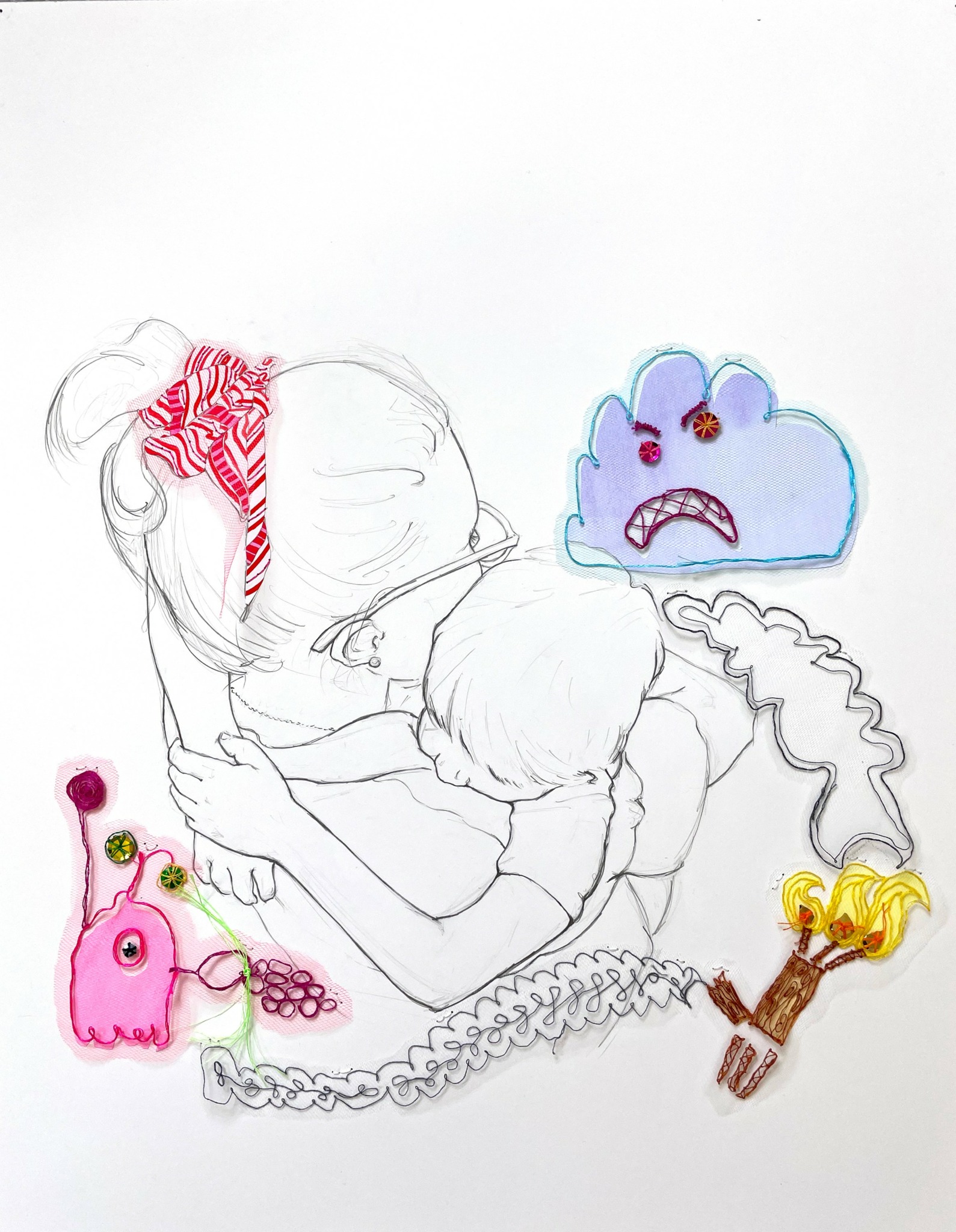
Can you share a story from your journey that illustrates your resilience?
Balancing my artistic practice with my family life and my professional obligations is a constant juggling act. When I completed my graduate degree and got my first college-level teaching job, I marked out my weekly studio days and thought ‘there! I’ve done it!’. But the next semester my schedule changed, and I had to do it all over again. I moved from an external studio, to one in my home, and back again, and had to do it again. I had a baby, and had to do it again, and again when he got older and his needs changed, and again, and again, and again. It used to feel so discouraging to have to keep solving a puzzle I’d already solved, but I’ve come to accept that balance is an ongoing activity – something that requires weekly, or even daily effort. Even if things don’t go perfectly according to plan (which they never do), partial success is still success.
To paraphrase David Bayles from ‘Art and Fear’, successful artists are simply the ones who don’t quit making art. Engaging in this process of prioritizing my art over and over again feels like an act of resilience.

Is there something you think non-creatives will struggle to understand about your journey as a creative?
I feel like there’s a real disconnect in the way we talk about art and artists these days. We go to museums, or browse Social Media, and are dazzled by finished products. There’s the sense that Artmaking is an activity reserved for only for the elite few born with talent, or those willing to devote their entire lives to the pursuit. This focus on outcomes has led many to believe artmaking is not for them because they don’t feel they’ll able to produce a masterpiece. They get intimidated by perfection, and talk themselves out of messing around with art before they even try. I wish we could (re)learn to value the process of artmaking just as much as, if not more than, the output. Artmaking is one of the most basic human experiences; one to which we are all entitled. It’s also one of the easiest, most accessible ways to add joy and satisfaction to our daily lives.
Many of my students know this intuitively. My Introduction to Drawing classes are mainly populated by non art-majors, as it satisfies a gen ed requirement. On the first day, I always ask them why they chose Drawing, instead of the other options. They all say something like ‘It’ll be fun’ or ‘It will help me de-stress’.
Numerous studies have proven what these students already know: that making art has a positive effect on our mental health for hours or even days after the activity. It can reduce cortisol levels (stress) and increase serotonin and dopamine (happiness and satisfaction), and the best part is: you don’t even have to like the art that you made. We reap the benefits just by engaging in the act of making things.
There are many reasons why artmaking is such a powerful tool for mental health, but I’m particularly interested in artmaking as a flow-state activity. Flow (also sometimes referred to as being ‘in the zone’), was first studied by psychologist Mihaly Csikszentmihalyi, who identified the characteristics of Flow activities, and linked these activities to positive states of mental health. In a flow state, you are working on a task with a clear set of goals and the opportunity for immediate feedback. The challenge is almost equally matched to your skill level, so that your attention is entirely absorbed. You will lose track of time, and your self awareness/ego are dialed way down. Spending time in this state is tremendously satisfying and rewarding – it makes our brains happy. There are lots of ways to enter a flow-state. Some people achieve it while playing sports or video games, but nearly all arts – drawing, sculpting, singing, dancing, knitting, playing an instrument, you name it, can induce states of flow.
Anyone interested in learning more about Flow and Happiness can check out one of the many articles online, or the TED Talk by Mihaly Csikszentmihalyi. There’s also a fascinating book called ‘Your Brain on Art’ by Susan Magsamen and Ivy Ross, where they theorize that the benefits to our health and happiness of regular engagement with the arts will one day be as accepted as regular exercise, and rightly so! It’s so accessible- artmaking really should be a tool in everyone’s self-care toolbox. Most people will never become professional or even serious artists, but you don’t have to be a serious artist to experience the benefits of keeping a sketchbook, dancing around your bedroom, or humming to yourself. My favorite automatic flow activity is Blind Contour Drawing (just google it). I have led hundreds of students of all ages and skill levels through this exercise, and it has a 100% success rate. Students enter a flow state almost instantly, every single time. I encourage everyone to try it, and see if you don’t feel a bit brighter afterwards.
Contact Info:
- Website: https://www.k2art.net/
- Instagram: @kmknight2

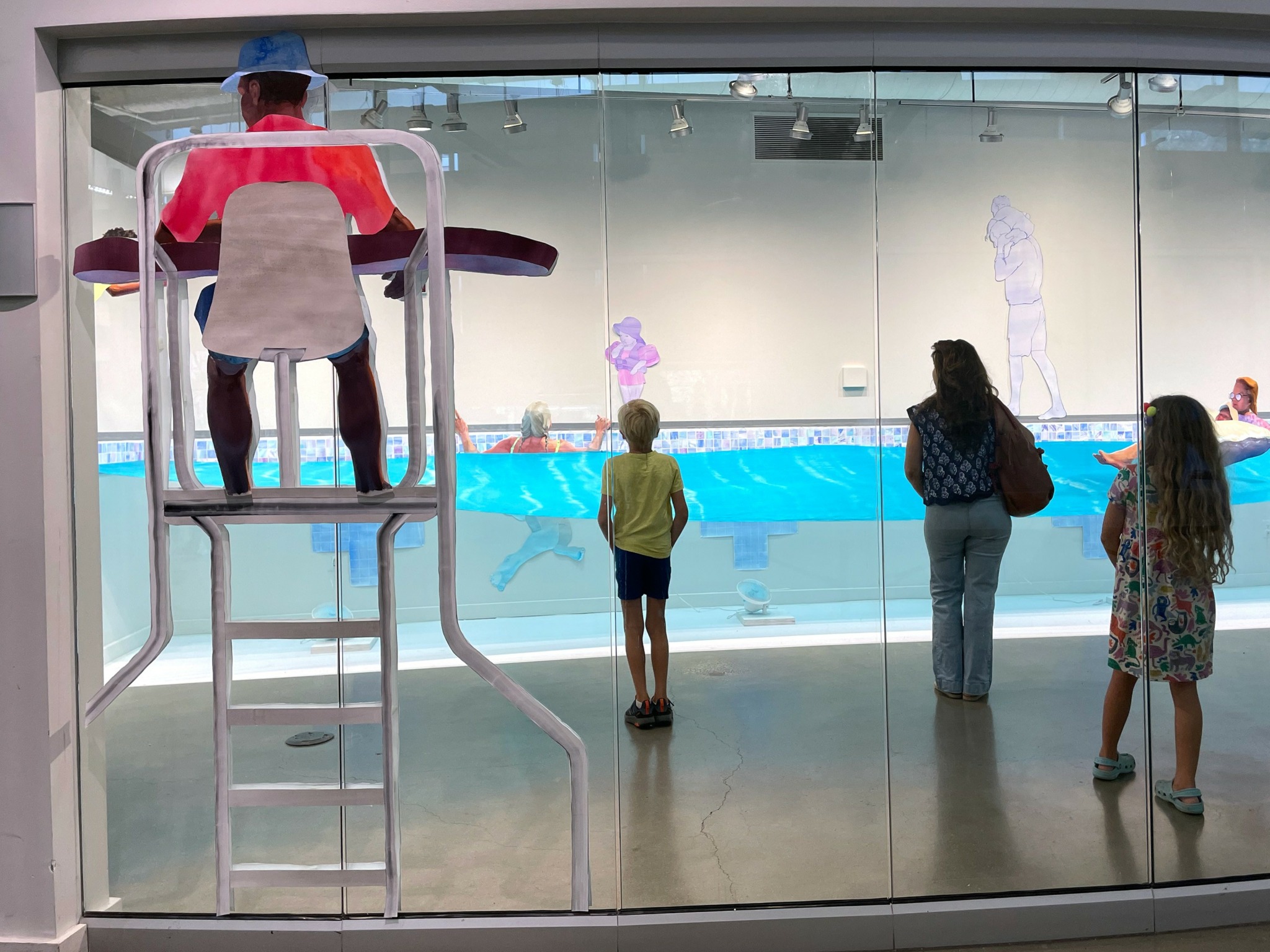
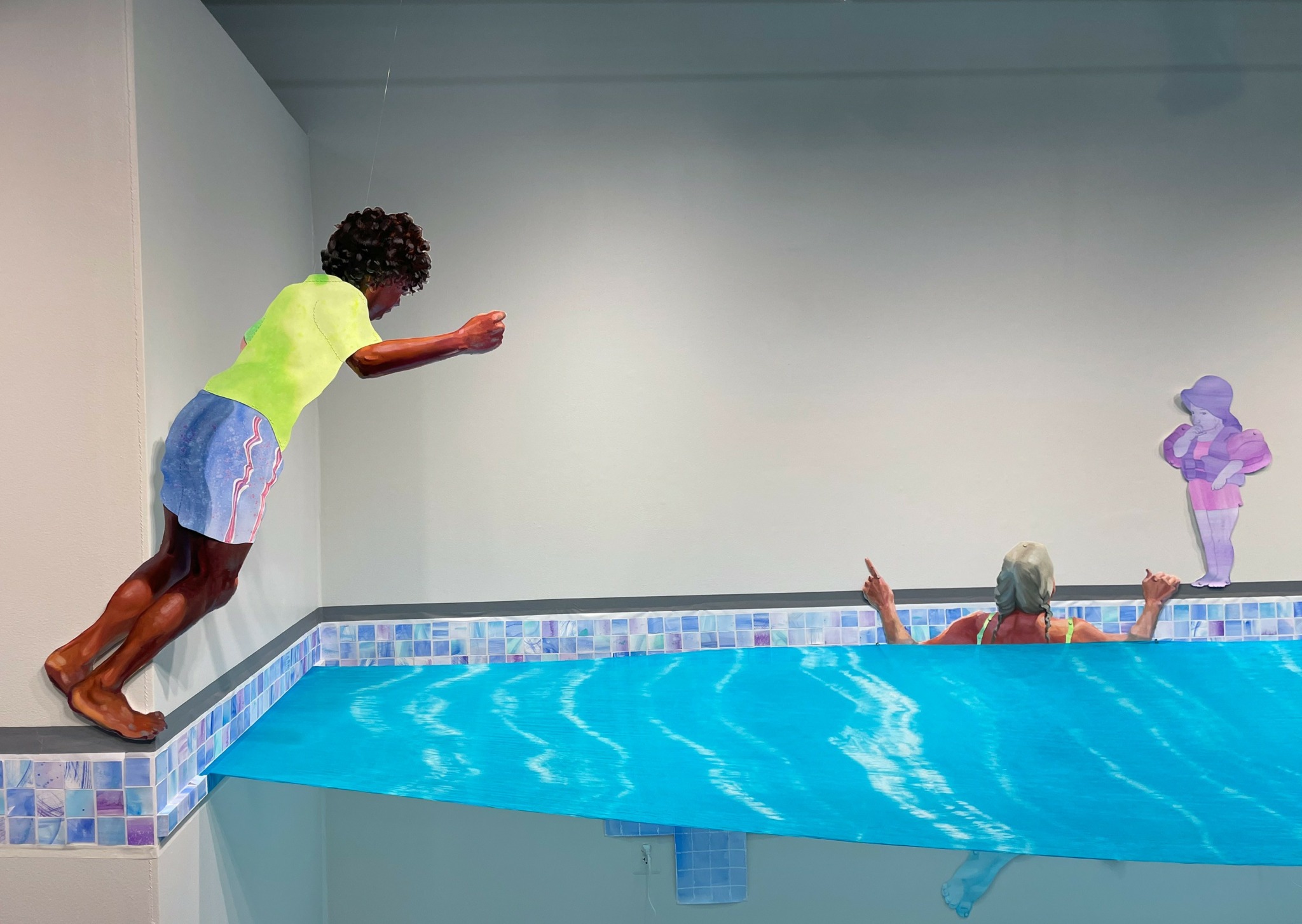

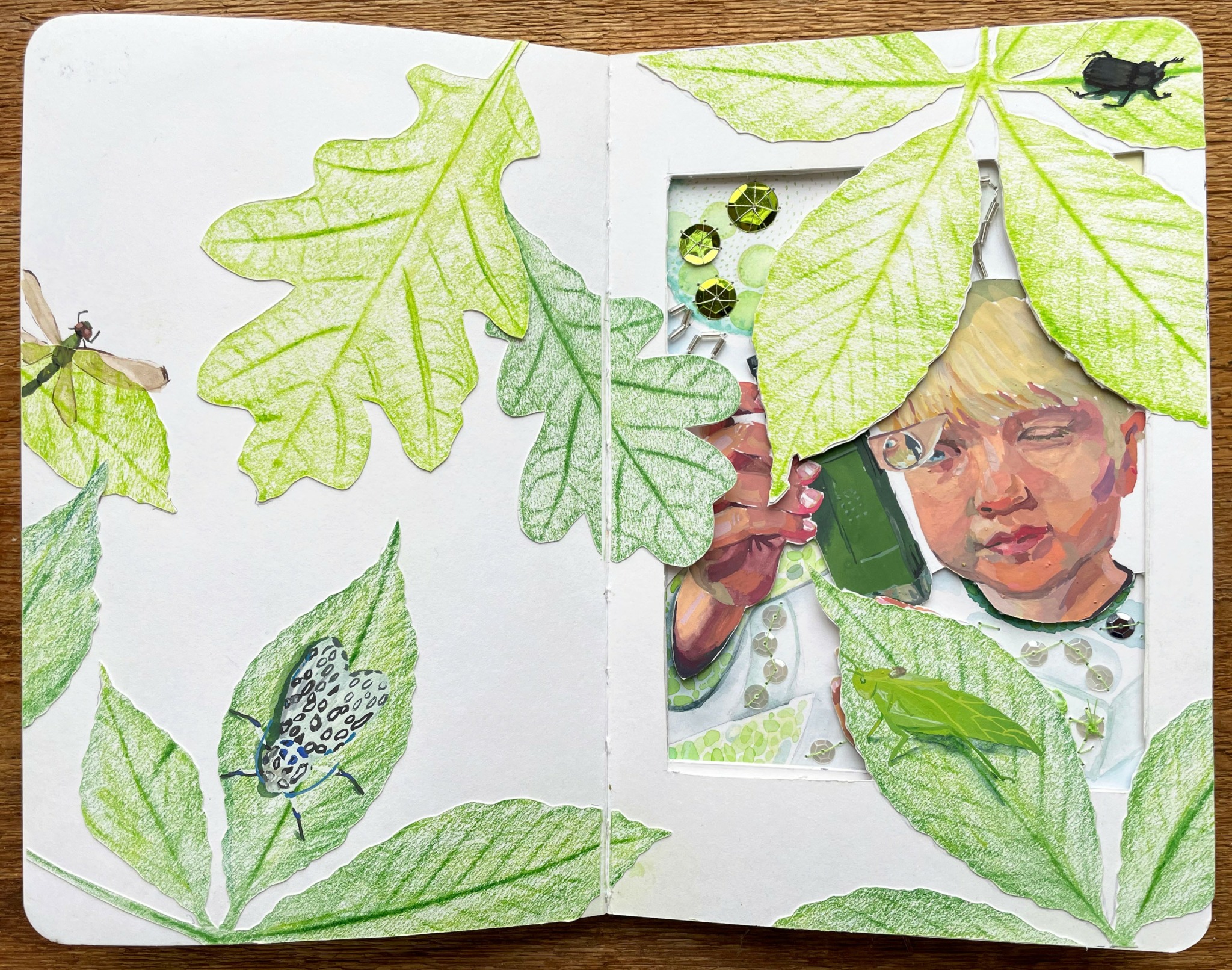
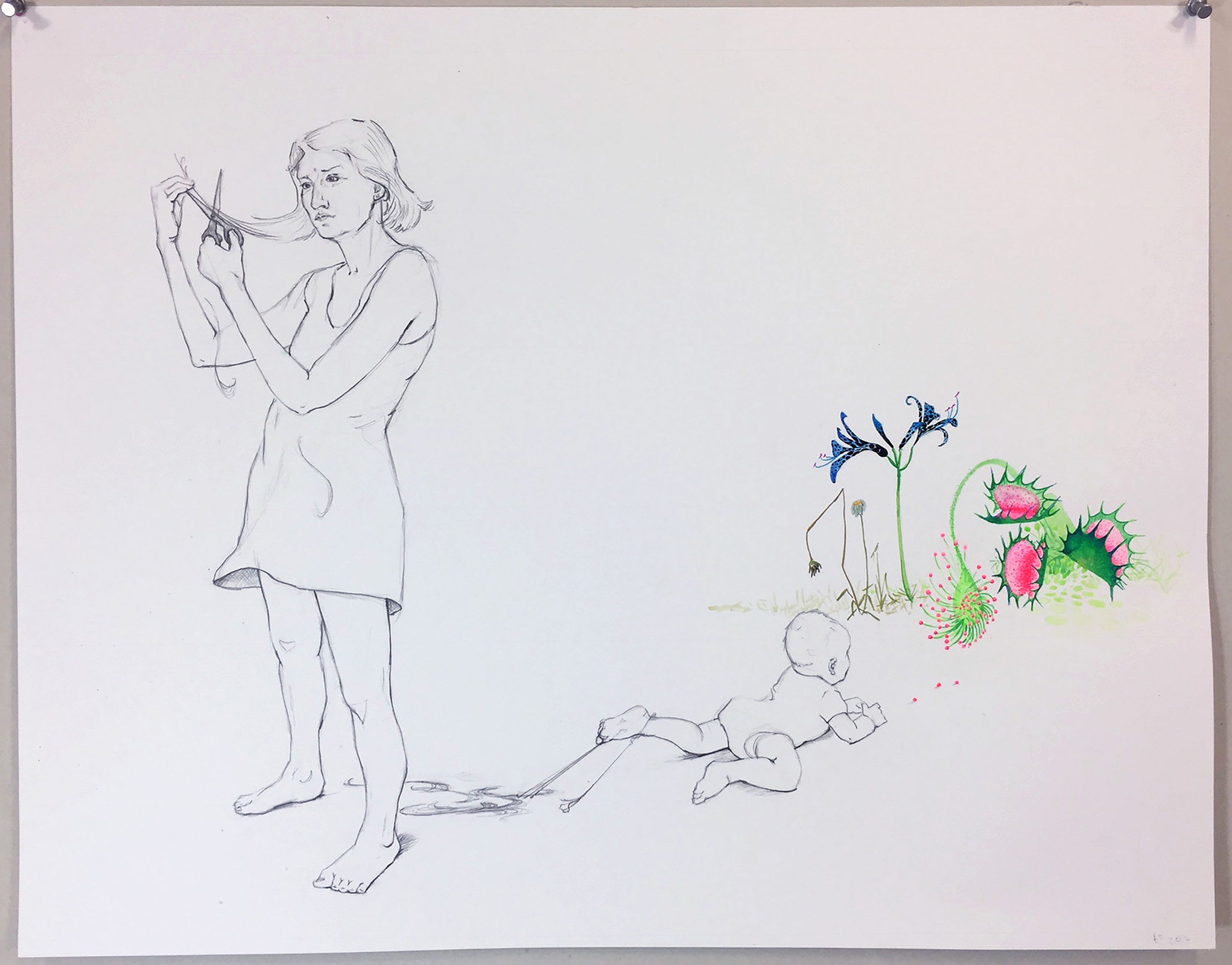
Image Credits
Artist photo by Mieke Gentis


